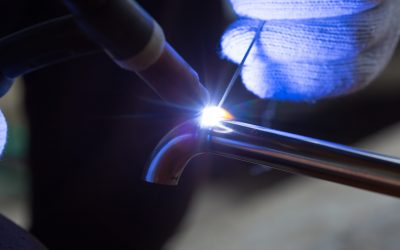Long known as one of the most exact and flexible welding techniques available in the business, Tungsten Inert Gas (TIG) welding has Industries such as aerospace, automotive, and medical device manufacturing, which require exacting accuracy, prefer Precision TIG Welding for its ability to produce neat, high-quality welds on a range of metals. Let’s look at what distinguishes this method, its uses, and the reasons accuracy counts.
What is precision TIG welding?
Using a non-consumable tungsten electrode, precision TIG welding is a technique of welding. The procedure shields the weld from contaminants using a shielding gas—usually argon or helium—the procedure shields the weld from contaminants. TIG welding is the optimal choice for tasks that demand precise control over heat input and weld bead placement, resulting in fine, clean welds without spatter or the need for post-weld cleanup.
For thin materials and complex components where precision is crucial, this type of welding is highly successful. Manual adjustment of the welding current and arc length allows operators a great deal of control over the weld. This degree of accuracy is difficult with other welding processes, such as MIG (metal inert gas) welding or stick welding.
The benefits of precision TIG welding
TIG welding’s primary benefit is its precision. Essential in high-performance sectors, it lets welders combine a vast spectrum of materials, including aluminum, stainless steel, and copper. Precision TIG Welding is a vital skill in industries such as architecture and decorative metalwork, where the appearance of the weld is just as important as its strength. It can create visually beautiful welds.
Depending on the thickness and type of metal being welded, this technique offers a special advantage in achieving strong welds without the necessity of filler material. This produces mechanically stronger and aesthetically cleaner welds.
Uses for Precision TIG Welding
Precision where high-quality welds are critical find extensive use for Precision TIG Welding. For structural components, for instance, the strength and accuracy needed in the aircraft industry make TIG welding the recommended method. Similarly, when accuracy and cleanliness are critical, the medical sector relies on precision TIG welding to manufacture surgical tools and instruments.
Precision TIG Welding by Counts
One interesting fact about TIG welding is that its deposition rate is generally slower than other welding techniques. However, the quality of TIG welding more than compensates for its slower deposition rate. According to recent industry surveys, TIG welding accounts for less than 10% of all welding, despite its employment in about 30% of high-performance applications where accuracy is crucial.
About the Company:
Precision TIG welding is their area of expertise at Micro Weld, producing perfect welds for many different sectors. They dedicate their knowledgeable staff to producing outstanding outcomes for every project, ensuring that the final product meets their clients’ high criteria.


